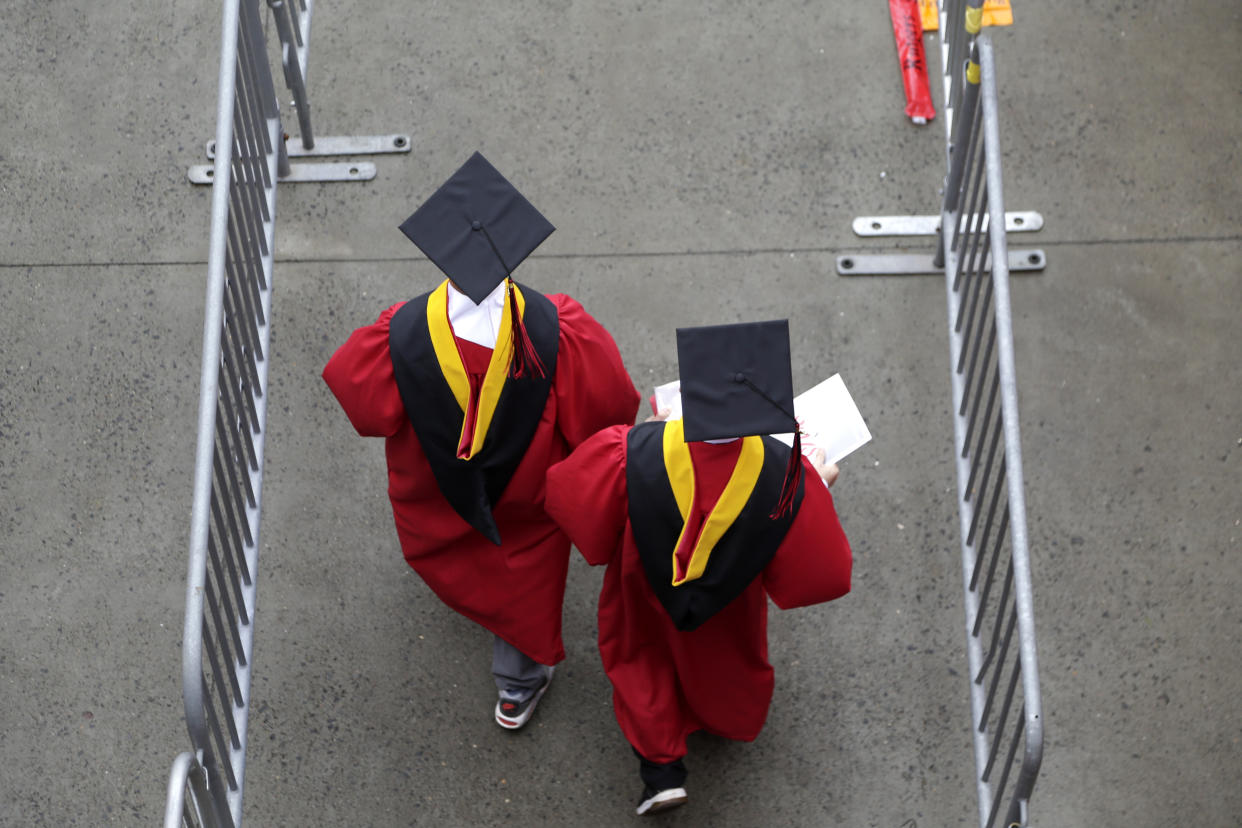How the new White House student loan relief plan will work

One month after the Supreme Court struck down the Biden administration’s student debt forgiveness plan, the White House rolled out a new website to push an initiative aimed at helping borrowers.
The Saving on a Valuable Education (SAVE) plan expands options for low-income borrowers and was first reported by CNN on Sunday afternoon. The Biden administration has attempted to find alternatives to reduce student loan debt to fulfill a campaign promise after an initial plan to relieve up to $20,000 in student loans for millions of borrowers was struck down in late June.
“The SAVE plan will cut payments on undergraduate loans in half compared to other [income-driven repayment (IDR)], ensure that borrowers never see their balance grow as long as they keep up with their required payments, and protect more of a borrower’s income for basic needs,” the Department of Education said in a statement about the new program.
Student loan repayments are set to begin again in October. They were paused in spring 2020 as part of the COVID-19 relief package and extended by both former President Donald Trump and Biden via executive actions.
What’s in the plan
While the new plan doesn’t fully go into effect until July 1, 2024, the Department of Education is enabling some benefits before student loan borrowers have to begin making repayments this fall that were paused due to the pandemic. If they sign up for the plan this summer, they could see changes to their bill by then.
The SAVE plan will dramatically increase the number of borrowers who can qualify for $0 monthly payments on their loans, offering further assistance to 1 million borrowers, the Department of Education estimates. Borrowers making less than $15 an hour will qualify for $0 payments, and those aren’t eligible will still save at least $1,000 a year on payments, compared to the existing Revised Pay-As-You-Earn (REPAYE) plan.
Under the new SAVE proposal, any loan interest not covered by a borrower’s monthly payment will not be charged by the Department of Education so that the overall loan won’t increase just because of unpaid interest.
A married borrower now won’t have to include their spouses income, as previously required under REPAYE, even if they filed taxes separately.

One of the biggest changes to come next July is that borrowers who qualify will be required to pay only 5% of their discretionary income, versus 10% under the current REPAYE plan. And some borrowers could see their remaining debt forgiven if they made the equivalent of 10 years of payment and their principal balance was $12,000 or less.
Similar income-driven repayment plans like SAVE have been created by the Department of Education but none have been threatened by successful legal challenges.
Earlier this month, the Department of Education announced it was forgiving $39 billion in student loan debt. The plan targeted those who had been in repayment for 20-25 years, helping approximately 800,000 Americans.
The Wharton School of the University of Pennsylvania estimates that the SAVE plan will have a net cost of about $475 billion over 10 years. Biden’s student loan forgiveness program struck down by the Supreme Court was expected to cost around $400 billion. Natalia Abrams, president and CEO of the Student Debt Crisis Center, told Yahoo News that 45 million Americans owe a collective $1.7 trillion of federal loan debt.
How to enroll
The beta version of the website for the program is available at https://studentaid.gov/idr/. Filling out an application takes an average of 10 minutes, according to DOE. While the forms need to be recertified annually, borrowers can opt in so it’s done automatically.
The beta website will be fully launched in August and anyone who enrolls before then won’t need to enroll again. Borrowers who are already enrolled in the REPAYE program will be switched automatically to the SAVE plan.
The previous White House attempt
Last August, Biden announced his plan to cancel up to $20,000 in student loan debt for millions of Americans, an attempt to fulfill a campaign promise and appease some top Democrats who had been outspoken on the issue, including Senate Majority Leader Chuck Schumer. Republicans protested the plan, with some saying it was a handout to the wealthy and others saying it would hurt military recruiting. Polling, however, showed plurality support among Americans for the plan.
After several Republican-led states brought suit against the plan, the Supreme Court, in a 6-3 ruling, voted to strike it down, leaving 26 million Americans who had applied for the student loan relief out of luck.



